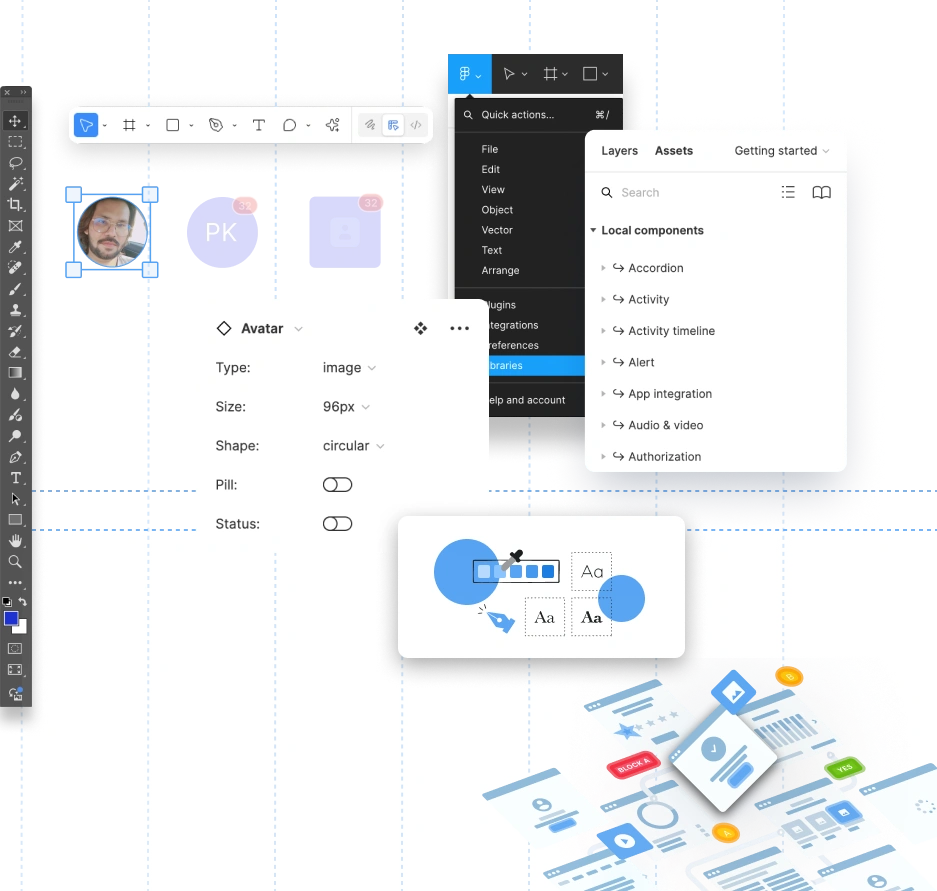UI/UX Design
Strong design turns good software into great software. Our UI/UX team blends aesthetics with clear, intuitive interaction.

Design with Purpose, Driven
by Insight
Good design is more than just looks , it’s how it works. Our UX/UI design services combine aesthetics with functionality to create digital experiences that feel intuitive, refined, and on-brand. Whether you are launching a new product or refreshing an existing interface, our team ensures design decisions are aligned with your business goals and user needs.
Design Services
Design Concepts & Prototypes
We bring your product vision to life with thoughtful, high-fidelity mockups and interactive prototypes. This helps stakeholders and developers visualize and validate ideas quickly, before a single line of code is written.
UX Audit
Our UX audits identify friction points, usability flaws, and conversion barriers across your digital product. You’ll receive actionable recommendations to improve user flows, accessibility, and engagement.
Design Systems
Consistency is key. We review your existing design system (or help build one from scratch), ensuring scalable, reusable components and cohesive branding across screens and platforms.
Modern Tooling &
Quality Standards
We work in Figma and the Adobe Creative
Suite, embracing collaborative workflows and
cutting-edge design features. Our process
includes:
Interactive prototyping
to simulate real user experiences
Component libraries
for scalable and consistent design
Rapid developer handoff
with inspect-ready HTML/CSS exports
Best practices
like responsive layouts, SVG-based assets,
and WCAG accessibility guidelines

Our UX Design Process
We follow a user-centered, step-by-step approach, starting from research and
wireframes to polished UI and testing, to ensure every design is functional, intuitive,
and aligned with your brand goals.
Discover
Research on your users & create persona(s)
Describe
Brainstorm ideas to answer the needs of your person(s)
Design
Creating user journeys & mock-ups of your products
Develop
Replicating the mock-up into the final product
Release
Continuous user testing even after product is released
Recent Projects
A quick look at some of our latest work, each project showcases our focus on user
experience, clean design, and real business results.